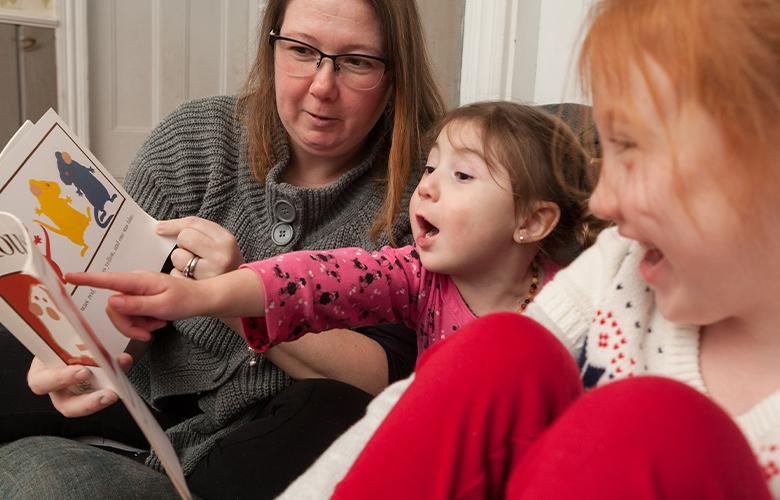
During this pandemic, parents of young children continue to deal with stressors—family health issues, reduced incomes, and disrupted work and childcare schedules. No matter what your situation is, here are some things to remember.
Your family is unique.
Each family has its own strengths, styles, needs, and ways of managing change. Some parents lean into creating detailed daily schedules. Some focus on family time—playing games, making music, or telling stories. Others are taking life one day at a time. However you cope, remember to take a deep breath and acknowledge that you are doing the best you can.
Routines can help.
Knowing what to expect helps adults and children feel more secure. Try to maintain any family rules and routines you already have in place—for example, about behavior, mealtimes, or speaking a home language. Reading together at bedtime can be especially comforting for young children. If you need bedtime stories, YouTube has favorites like Goodnight Moon in English and Spanish.
Some battles aren’t worth fighting.
Changing routines—especially when families are in close quarters for long periods—can create tension. When your child acts up, gets angry, or seems needy, picture them with a bandage on their forehead. Ask yourself, “How important is this?” Then take a deep breath and respond accordingly. If possible, make a space where family members can be alone when needed.
You are your child’s primary educator.
This expression is as true today as ever. It does not mean parents have to be school teachers. When you engage children in chores, routines, family rituals, and conversations, you support their physical, social-emotional, and cognitive development in ways that are critical and complementary to school learning.
Play is important.
Unstructured play helps develop children’s cognitive, communication, and collaboration skills. It also relieves stress. Encourage your child’s independent play and, when possible, support it with everyday materials: a flashlight for making shadows, paper cups for building a tower, or magazines and tape for making a collage.
Social distancing doesn’t mean social isolation.
Thanks to social media, families can stay connected emotionally, if not physically. Help your child communicate with family and friends using FaceTime, Skype, or the telephone. If possible, set up calls at times when you and your child are relaxed and can focus on the conversation.
It is easy to feel discouraged as the coronavirus continues to impact our lives, especially for families facing multiple challenges. Be gentle with yourself and acknowledge your family’s strengths. Reach out for help when you need it, lend a hand when you can, and remember that we really are all in this together.
| Cindy Hoisington, an early childhood educator and researcher, develops authentic, playful science and language experiences for children and creates supports for their families and teachers, with a focus on marginalized communities. |

Add new comment